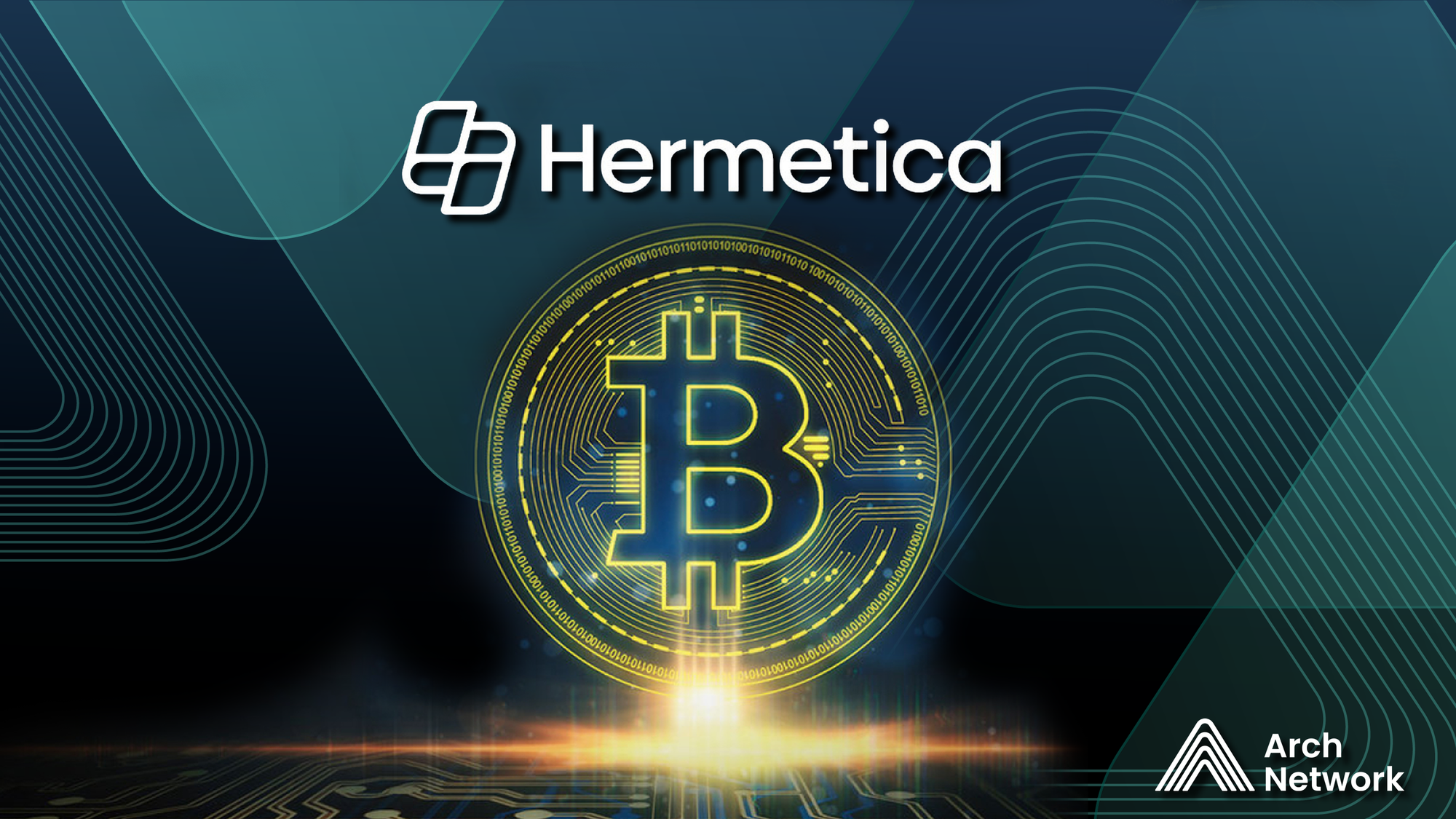Hermetica, a Groundbreaking Stablecoin for Bitcoin
A Bitcoin-backed stablecoin is a critical component for building a future for DeFi on the world’s most valuable and most decentralized…

A Bitcoin-backed stablecoin is a critical component for building a future for DeFi on the world’s most valuable and most decentralized blockchain. It’s not hard to see why: until Bitcoin becomes the standard, nearly every fiat and digital economy is tied to the US dollar.
Having a stablecoin that major institutions and enterprises can trade and trust is essential to building a truly on-chain future. In 2022, 70% of on-chain transactions involved stablecoins, according to a report by Castle Island Ventures.
Right now, there are few options to hold dollars without leaving the Bitcoin blockchain. If you want to use the leading blockchain-based stablecoins on the market, like USDC or Tether, you are forced into the same traditional banking system that many DeFi believers are trying to escape.
That TradFi exposure is especially evident in pivotal moments, such as the collapse of Silvergate Bank and Silicon Valley Bank in March of 2023, when USDC briefly lost its 1:1 dollar peg, its value momentarily falling as low as $0.88.

Introducing Hermetica, a Bitcoin-native stablecoin building on Arch
Hermetica presents an intriguing DeFi solution with USDh, a fully Bitcoin-backed synthetic dollar that cleverly uses the futures market to create a price-stable position — a strategy much more capital efficient than over-collateralized stablecoins that must also manage liquidation risk.
Anyone can stake USDh to receive sUSDh to immediately earn yield up to 25% APY. Returns fluctuate based on the market’s demand for long leverage, with a high of 26.11% during the 2022 bull market. Backetests show an average APY of 11.71% from January 2021 to March 2024.
Right now, USDh and sUSDH are issued on Bitcoin L1 via the Runes protocol.
Soon, though, Hermetica will be able to unlock smart contract programmability and deeper liquidity directly on the Bitcoin base layer — because soon it will be launching with Arch.
Enabling trust-minimized DeFi on the Bitcoin base layer
There are a number of reasons why Jakob Schillinger, the CEO of Hermetica, is bullish about building with Arch, the only bridgeless execution platform for Turing-complete smart contracts on Bitcoin.
“The ability to trade natively on Bitcoin with PSBTs, using Arch — that, alone, is superior to anything on the market today,” Schillinger says.
Arch’s core innovation is a novel FROST + ROAST signature scheme that combines with a specialized VM and Decentralized Verifier Network. Through this trust-minimized architecture, it is able to offer a “Layer 1.5” approach that brings bridgeless and decentralized execution to Bitcoin while still maintaining block consensus and transaction data availability on the base layer.
In financial markets, “makers” assume the responsibility of initiating a purchase or sales order by stating what they are willing to buy/sell and at what price, while “takers” are those who execute the order by agreeing to it.
With Arch, market takers on Bitcoin are able to interact without taking on any additional trust assumptions than those inherent to working on Bitcoin. Meanwhile, liquidity providers — such as those staking sUSDh for the Hermetica stablecoin — take significantly limited risk by placing trust in a decentralized validator set.
“As a Liquidity Provider, using Arch is a lot more risk diversified,” Schillinger says.
Using Arch to unlock deeper liquidity on Bitcoin
Adding smart contract functionality also adds important DeFi capabilities to Bitcoin, including the ability to use multi-party contracts and cross-program invocation to fuel decentralized and trust-minimized liquidity pools, AMMs, and DEXs that can support stablecoins like Hermetica.
“To maintain the right prices for USDh on AMM DEXs, there needs to be an efficient way to arbitrage. If it’s trading on a centralized exchange, and the price in the liquidity pool is different, somebody steps in and makes the profit and brings both prices back in line,” Schillinger says.
“If you can only transact with Bitcoin transaction speeds, that becomes quite a challenging and costly experience. By arbitraging the peg on Arch, we should be able to access much faster and cheaper transactions, while users still have a native Bitcoin experience.”
“Arch essentially unlocks the ability to provide liquidity into an AMM pool with a diversified signer set — basically diversified risk — and the ability to arbitrage that pool cheaply and effectively.”
Calling all builders: Join the Arch Testnet
In preparation to deploy USDh on Bitcoin with Arch, Hermetica is currently working with a team to translate its code into Rust.
“The whole Arch team has been super responsive, very fast at bringing the right tools to the developer community, and it’s been a great experience,” Schillinger says. “Working with them is very dynamic. There’s obviously a palpable excitement around everything that is happening with Arch.”
Read more about the testnet here, and sign up to earn rewards for building on Arch!
